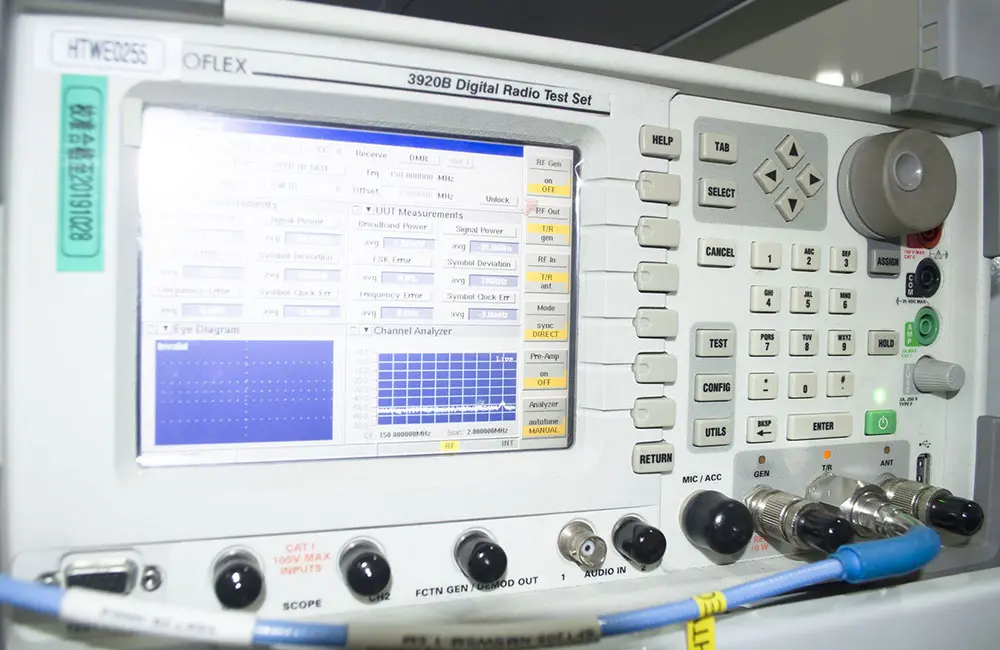
What is GB 14233.1 testing?
GB/T 14233 is a recommended national standard issued by the General Administration of Quality Supervision, Inspection, and Quarantine of the People's Republic of China and the China National Standardization Administration Committee. This standard is divided into two parts: GB/T 14233.1-2008 "Test Methods for Infusion, Transfusion, and Injection Equipment for Medical Use—Part 1: CheMICal Analysis Methods" and GB/T 14233.2-2005 "Test Methods for Infusion, Transfusion, and Injection Equipment for Medical Use—Part 2: Biological Test Methods." GB/T 14233.1-2008 was published on November 3, 2008, and came into effect on October 1, 2009, replacing GB/T 14233.1-1998.

Domestic and international context:
Currently, there are no international standards directly related to the analytical methods for infusion, transfusion, and injection equipment. However, some dissolution test methods are mentioned in the United States Pharmacopeia (USP) and European Pharmacopoeia (EP). GB/T 14233.1-2008 is widely referenced in China, and its dissolution test methods are commonly applied in the technical specifications of many polymer-based medical devices.
Scope of the standard:
The standard applies to the chemical analysis of infusion, transfusion, injection, and related equipment made from medical polymer materials. It can also be referenced for the chemical analysis of other polymer-based medical products.
GB/T 14233.1-2008 is part of a series of standards for testing infusion, transfusion, and injection equipment for medical use, focusing on chemical analysis methods. It covers the preparation of test solutions, routine dissolution tests, and the analysis of heavy metal elements in materials, residual ethylene oxide after sterilization, and more.
The dissolution tests include turbidity, color, REDucing substances (oxidizable substances), chloride, pH, evaporated residues, total heavy metal content, UV absorbance, ammonium, and certain heavy metal elements. These tests assess the release of harmfUL substances from finished products in a specific extraction medium to determine compliance with standards, providing a preliminary evaluation of the chemical hazards of medical devices. However, due to the limitations of this standard, it cannot identify the types of dissolved substances when non-conformities occur. To address this, CHINA JJR laboratories use advanced and specific analytical methods, such as GB/T 16886.18, for the analysis of unknown substances, helping to effectively identify hazardous substances and assess their risk and safety.
CHINA JJR laboratories' approach is also reflected in the draft of the GB/T 14233.1 "Test Methods for Infusion, Transfusion, and Injection Equipment for Medical Use—Part 1: Chemical Analysis Methods" released by the National Standardization Technical Committee for Infusion Devices for Medical Use.
Based on CHINA JJR's experience, the potential causes for exceeding chemical performance limits can be categorized into three main areas:
1. Testing process: including test methods, personnel, reagents, equipment, and environment.
2. Raw materials and additives: such as aging agents, crosslinking agents, plasticizers, heat stabilizers, antioxidants, light stabilizers, flame retardants, foaming agents, antistatic agents, fungicides, colorants, fillers, coupling agents, lubricants, mold release agents, etc., used during material processing.
3. Production process: including injection molding, polishing, polymer coating, solvent extraction, and residual sterilization agents.
China JJR Laboratory offers GB 14233.1 testing services for medical devices. Feel free to contact us for consultation!
Email:hello@jjrlab.com
Write your message here and send it to us
 WEEE Registration for Waste Electrical &Electr
WEEE Registration for Waste Electrical &Electr
 MSDS Chemical Safety Testing
MSDS Chemical Safety Testing
 What Are the Differences Between UK REACH and EU R
What Are the Differences Between UK REACH and EU R
 E-Cigarette GB 41700 Compliance Testing
E-Cigarette GB 41700 Compliance Testing
 What Are the Testing Items of California Propositi
What Are the Testing Items of California Propositi
 E-Cigarette EU TPD Testing
E-Cigarette EU TPD Testing
 Testing Certification for E-cigarettes Exported to
Testing Certification for E-cigarettes Exported to
 What is Amazon US CPC Certification?
What is Amazon US CPC Certification?
Leave us a message
24-hour online customer service at any time to respond, so that you worry!




